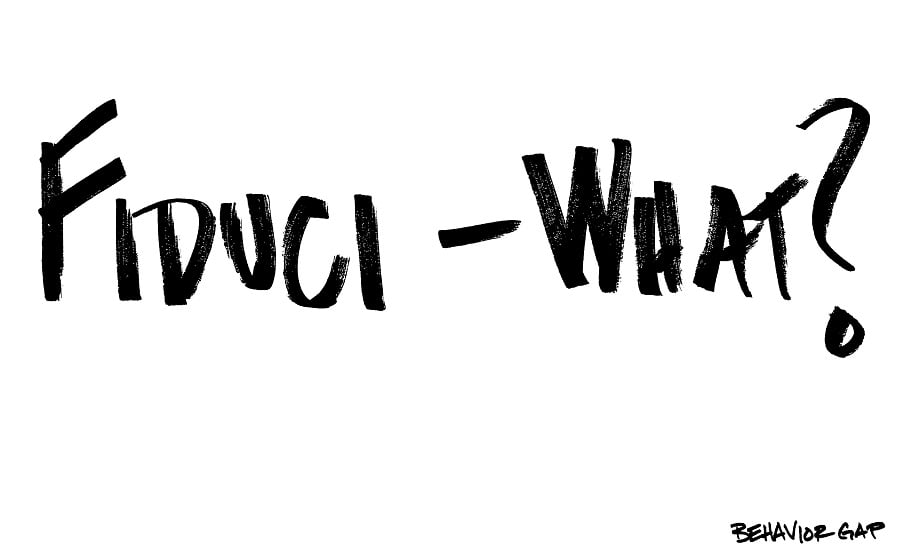Earlier in my career, I switched firms. The change meant I left a position where I couldn't legally call myself a fiduciary. But at the new firm, I was required to be one.
I was super excited. Finally, I could tell my clients just how great it would be for me to act as a fiduciary.
Boy, was I wildly disappointed.
The discussion went something like this. "Guess what? I'm now legally required to put your interests first." The silence was deafening. But when I dug down, I discovered my clients already
expected me to provide advice that put them first. So, yeah, good for me that I was a fiduciary — just keep giving us good advice.
This reaction is interesting on two levels. First, it shows that our clients expect us to act like a fiduciary. Hopefully you are doing so already. Even if you can't legally call yourself a fiduciary (yet),
it's good for clients and for your business.
Second, most people don't even know what it means. I suspect many people hear "fiduciary" and think, "fiducia-what?" In this instance, what you
do tends to trump any particular title.
So I believe the ongoing fiduciary debate creates an opportunity for
real financial advisers to have important conversations with their clients. They may not be familiar with the term, but I'm betting they'll get interested fast when they understand it's about acting in their best interests.
Look, I know there are many financial professionals who are worried about this change and what it will mean for their jobs. But really, independent of where we work or what we call ourselves right now, aren't we better off helping our clients better understand the services we're providing?
Clients may still give you a blank stare when you say, "fiduciary," and that's OK. Because over time, the more we talk to our clients and the more we do to help them understand conflicts of interest, the better we can serve their interests and do the work that only a real financial adviser can do.
Carl Richards is a certified financial planner and director of investor education for the BAM Alliance. He's also the author of the weekly "Sketch Guy" column at the New York Times. He published his second book, "The One-Page Financial Plan: A Simple Way to Be Smart About Your Money" (Portfolio), last year. You can email Carl here, and learn more about him and his work at BehaviorGap.com.







